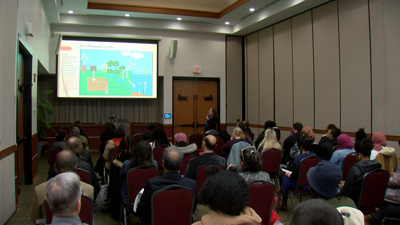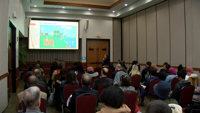PRINCESS ANNE, Md. – Findings from a roughly two and a half year study on ambient air quality on the Lower Eastern Shore, which researchers say shows is only minimally affected by the poultry industry, were presented Wednesday afternoon at the University of Maryland Eastern Shore.
The University, along with the Maryland Department of the Environment took part in collecting and reporting data for The Lower Shore Air Monitoring Project, which is funded by the Delmarva Chicken Association. The project was set up in April 2020 with air monitoring stations installed in locations in Princess Anne, considered a low-density poultry operation site, and Pocomoke City, a high-density poultry area.
According to UMES, the sites are the first to measure ambient, or outdoor air quality on the Eastern Shore. The findings, according to Deborah Sauder, a Chemistry professor at UMES, show poultry operations have little to no affect on ambient air quality.
"Our conclusion so far just in looking at our data,” said Sauder, “is that Chicken houses do increase the ambient level of ammonia but not to any level that anyone has declared to be of concern to human health."
Environmentalist who have been fighting for stronger regulations regarding air and water pollution from poultry houses say this research is not a study at all. They say it is simply a paper that shows data and asks questions they have already been asking for some time. Abel Russ, an attorney for the Environmental Integrity Project, said the data is flawed.
"They didn't look at anywhere on the Eastern Shore where people are actually living in proximity to CAFO’s (a large scale agricultural facility that raises animals) or that could be anywhere from the fence line or many of the places where people live in a high-density CAFO area, at someone's home for example”, Russ said.
Sauder argues this research is merely a starting point, offering data that had never before been measured in that area. She is calling the project a good contribution and supports the need for more research.
A link to the study can be found here.


